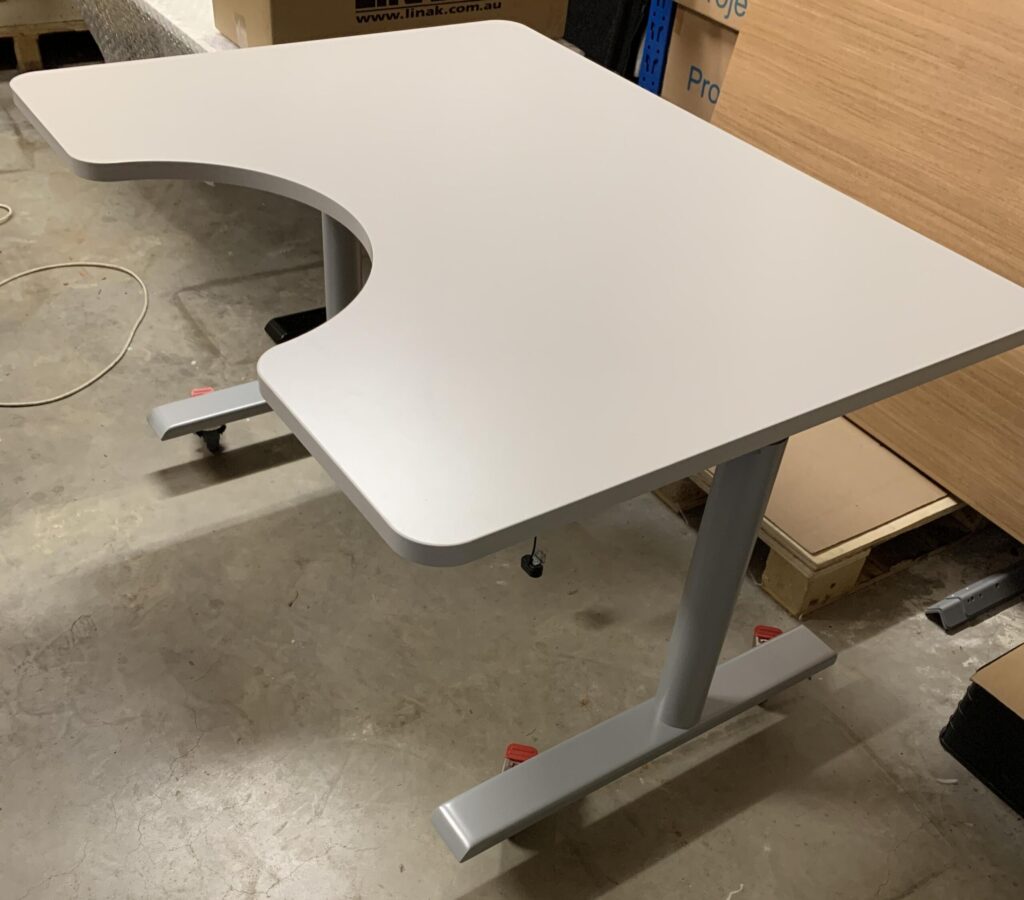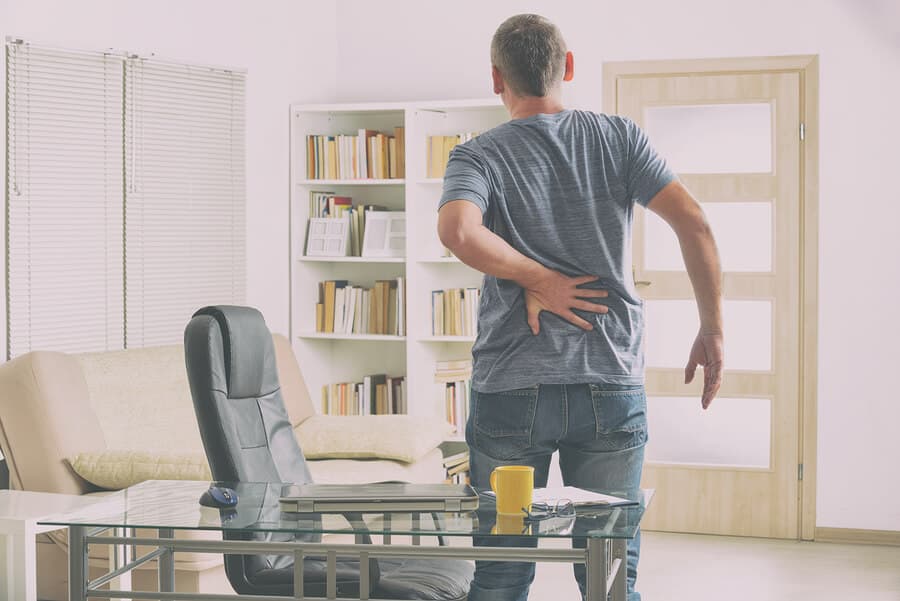
How Melbourne’s New Rehabilitation Unit Moves Patients Out of Hospital
One of Ergomotion’s recent projects was the installation of a custom made desk in a brain injury rehabilitation centre in Melbourne’s south-east.
The brand-new, advanced centre enables patients to move out of hospital or nursing facilities sooner, where specialised care can begin. As a result, the rehabilitation process can also start sooner.
Moving patients out of hospital and into proactive rehabilitation kick-starts not only the physical journey, but the emotional one, too. A dedicated centre allows for more specialised, expert care.
Brilliant care at the centre involves extensive physical, behavioural, cognitive and emotional patient assessment. Individualised programs, advice, exercises and assistance assures the most productive care.

Ergomotion’s custom made standing desk
Ergomotion is pleased to have installed a custom made standing desk at one of Australia’s first brain rehabilitation hubs. The electric height adjustable desk was installed for the rehabilitation of patients.
A few particular design modifications meant we could create a desk that would adapt to the specific needs of the patients at this centre. The electronic motors means users – even those in wheelchairs – will not struggle to operate the lifting and lowering desk mechanism.
Rehabilitation exercises and activities
Of course, not all rehabilitation exercises are physical. Let’s quickly touch on the cognitive ones first, before talking a little bit more about the physical aspect.
The most common cognitive activities involve skills like language, memory, reasoning and visual perception. These activities are designed to train (or retrain) the brain.
You might alternate cognitive rehabilitation with the colloquial “brain training”, but these two terms can slightly differ: brain training is normally used by healthy individuals who wish to “prevent age-related deficits before they occur” — think those Lumosity or Nintendo brain training apps and games — where cognitive remediation or rehabilitation are exercises designed to improve cognitive deficits.
Physical rehabilitation exercises will differ in not only the area of the body being worked, but also the intensity of the activity. Every patient will be at a different stage of their individualised rehabilitation routine, so it’s essential they are armed with the tools and equipment to cater to their individual needs.
When it comes to our desk, the ability to adjust its height to suit each and every user in facility ensures maximum benefit and use.
Height adjustable desks: why is electric better than manual?
It’s just like the age-old automatic vs. manual car debate.
It’s simple: manual means worked by the hands rather than by an electrical device. Hand-cranked height adjustable desks often become cumbersome. It’s not unusual for those kinds of desks to end up as stagnant, sitting desks.
Furthermore, it’s not unlikely that patients will need help from a carer to adjust manual desks, rather than having the freedom to do it themselves, when they want to, with just the push of a button on an electric height adjustable desk.
Custom made standing desks are adaptable to many patients
We crafted the desks to have a deep cut out on the front surface, much like a semi circle cutting into the desk. The custom made desks, then, allow those who use wheelchairs to move closer to the desk to do their rehabilitation exercises.
All patients are in different circumstances and therefore have different needs. Perhaps some are wheelchair-bound, whereas others are standing. The key here is adaptability, and the ease at which the furniture and equipment supporting their rehabilitation journey can adapt to their needs, and provide them with the most effective and comfortable setting.
Young people in rehabilitation
A quick Google search on young people living in nursing homes or aged care brings about various sites and articles on a sensitive debate topic. There are many initiatives in Australia to support young people with disabilities and provide a rehabilitation centre designed just for them, and not for the elderly.
The activities and exercises common in nursing homes means younger patients often need to improvise exercises using equipment that’s not quite right for them.
Nursing homes are more often than not unsuitable for a young person with an acquired disability, but there has always been very new alternatives. The new rehabilitation centre provides an opportunity for young people to begin a more proactive and appropriate recovery journey.
Youngcare is an Australian organisation dedicated to raising awareness and funds to move young Australians out of nursing homes and into more appropriate rehabilitation centres.
They’ve released some statistics on their website that help illustrate the issues young Australians face when they have little to no choice when moved to an aged care facility for their recovery. Social isolation and depression are some of the links associated with young people in aged care.
Moreover, the issue here does not lie solely with the individual. Surrounding family and friends also feel the strain, stress and a sobering feeling of helplessness.
This new centre will provide some much-needed and specialised care for younger people who have a growing need for specialised, dedicated, advanced care. Slick design and equipment, paired with brilliant nursing and neurological specialists will help create a proactive and positive environment for these patients on their way to recovery.
To find out how Ergomotion’s custom made standing desks can apply to your specific needs, please contact us today.





